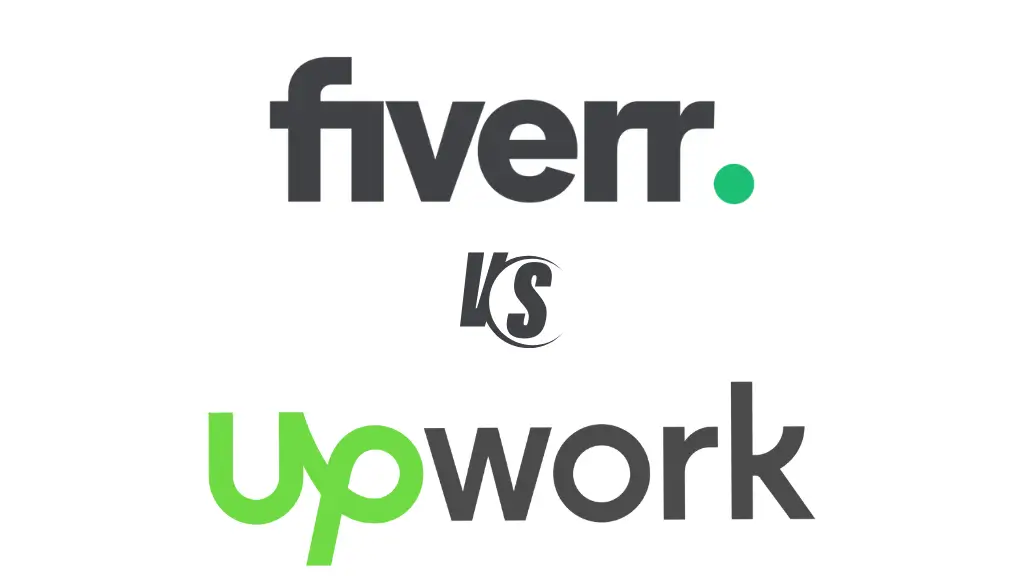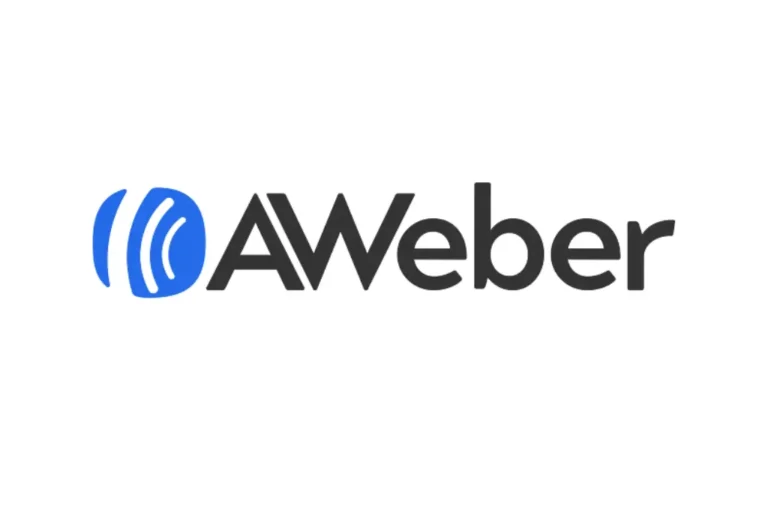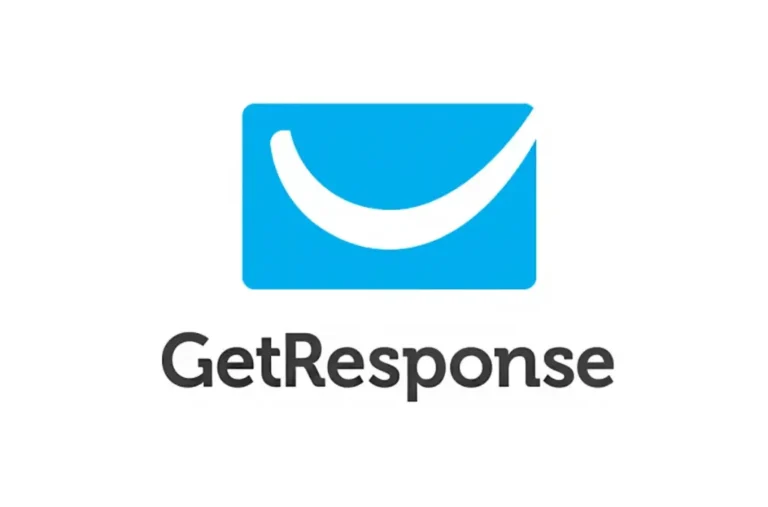Table of Content
Table of Contents
Introduction
The freelance economy in 2025 has reached unprecedented heights, with more professionals than ever choosing the flexibility and autonomy of independent work. According to recent market analyses, over 70 million Americans are now participating in some form of freelance work, representing a significant shift in how talent connects with opportunity in our digital-first world.
At the center of this thriving ecosystem are platforms that connect freelancers with clients, with Fiverr and Upwork standing out as two dominant players. Choosing between these platforms isn’t merely a matter of preference—it can significantly impact your earning potential, work satisfaction, and career trajectory.
In this comprehensive Fiverr vs Upwork comparison, we’ll examine both platforms in detail, analyzing their fee structures, user experiences, strengths, and weaknesses. By the end, you’ll have a clear understanding of which freelance website better aligns with your specific needs, whether you’re looking to hire talent or offer your services in the ever-expanding gig economy.
Fiverr vs Upwork: Platform Overview
What is Fiverr?
Fiverr is a gig economy platform founded in 2010 that revolutionized how freelance services are marketed and sold online. As a service marketplace, Fiverr operates on a unique model where freelancers (called “sellers”) create predefined service packages (“gigs”) that buyers can browse and purchase with just a few clicks.
The platform derives its name from its original concept where all services cost $5, though today’s offerings range from basic $5 tasks to complex projects worth thousands of dollars. Fiverr’s marketplace covers over 500 service categories across fields like graphic design, digital marketing, writing, programming, voice-over work, and more specialized niches like AI services and NFT art.
What distinguishes Fiverr is its product-like approach to services, where deliverables, timelines, and prices are clearly defined upfront, creating a shopping-like experience for clients seeking freelance talent.
What is Upwork?
Upwork is a comprehensive remote work platform that emerged from the 2013 merger of Elance and oDesk, though its roots stretch back to 1999. Unlike Fiverr’s gig-based system, Upwork functions more like a traditional job marketplace where clients post project requirements and freelancers submit proposals.
The platform offers robust project management tools that facilitate ongoing collaboration, time tracking, and milestone-based work arrangements. Upwork caters to a wide range of industries, from software development and creative services to administrative support and consulting, with a particular strength in complex, ongoing projects.
Upwork positions itself as a complete ecosystem for managing remote work relationships, offering features like team collaboration tools, work diaries, and integrated video conferencing to support long-term professional engagements.
Key Differences Between Fiverr and Upwork
| Feature | Fiverr | Upwork |
|---|---|---|
| Business Model | Gig-based: Freelancers create predefined service packages | Project-based: Clients post jobs and freelancers submit proposals |
| Transaction Flow | Buyer searches and selects from available gigs | Client posts job, reviews proposals, then selects freelancer |
| Project Complexity | Excels with clearly defined, discrete tasks | Better suited for complex, evolving projects |
| Time Frame | Typically shorter engagements with fixed deliverables | Often longer-term relationships with ongoing work |
| Payment Structure | Package-based pricing with clear deliverables | Hourly or fixed-price with milestone payments |
| Platform Identity | Marketplace of services | Talent matching platform |
The fundamental difference between these platforms lies in their approach to freelance work. Fiverr’s model puts freelancers in the driver’s seat, allowing them to define their services and prices, while clients shop for the right fit. Upwork gives more control to clients, who define their needs first, with freelancers competing to win the work through customized proposals.
Pricing, Fees, and Payment Systems
Fiverr Pricing and Service Fees
Fiverr operates with a straightforward fee structure, though it has evolved from its early days:
- For Sellers (Freelancers): Fiverr takes a flat 20% commission on all earnings, including tips. For example, if a client pays $100 for your service, you’ll receive $80.
- For Buyers (Clients): Clients pay a service fee of $2 on purchases up to $40 and 5% on purchases above $40. This fee is added to the gig price during checkout.
Fiverr’s gig package system allows freelancers to offer their services in tiered pricing models:
- Basic: Entry-level service with limited features
- Standard: Mid-tier offering with additional value
- Premium: Comprehensive service with all bells and whistles
The platform also features a tipping system where satisfied clients can add additional compensation after project completion, though Fiverr still takes its 20% cut from these gratuities.
Upwork Pricing and Commission Structure
Upwork employs a sliding fee scale that rewards long-term relationships:
- For Freelancers:
- 20% for the first $500 billed with each client
- 10% for lifetime billings between $500.01 and $10,000
- 5% for lifetime billings that exceed $10,000
- For Clients:
- 5% processing fee on all payments
- Optional membership plans: Basic (free), Plus ($49.99/month), Business ($849/month), and Enterprise (custom pricing)
Upwork’s milestone payment system provides structure for fixed-price projects, breaking them into manageable chunks with payments released upon completion of predefined deliverables. For hourly contracts, Upwork’s Work Diary automatically tracks time and takes screenshots at random intervals to verify work activity.
Payment Protection and Withdrawal Options
Both platforms prioritize secure transactions but handle payment protection differently:
Fiverr’s Payment Protection:
- Client funds are collected upfront before work begins
- Money is held in escrow until delivery is accepted
- Automatic release after 3 days if the client doesn’t request revisions
- Dispute resolution system for addressing conflicts
Upwork’s Payment Protection:
- Hourly Protection Plan ensures payment for tracked hours
- Milestone Protection for fixed-price projects
- Escrow system for releasing funds upon milestone completion
- Mediation services for dispute resolution
Withdrawal Options Comparison:
| Method | Fiverr | Upwork |
|---|---|---|
| Direct to Bank | Available (3-7 business days) | Available (2-5 business days) |
| PayPal | Available (instant to 48 hours) | Available (instant to 24 hours) |
| Credit Card/Debit Card | Not available | Available via Instant Pay ($2 fee) |
| Payoneer | Available | Not available |
| Minimum Withdrawal | $20 | $0.01 for direct deposit, $1 for PayPal |
| Withdrawal Fee | Varies by method | Varies by method |
| Clearing Period | 14-day holding period for new sellers | 5-day security period after client payment |
Both platforms ensure freelancers and clients can engage with confidence, knowing that payment systems are secure and transparent, though Upwork offers slightly more flexibility in withdrawal options and lower minimum thresholds.
Freelancer and Client Experience
Ease of Finding Jobs or Freelancers
On Fiverr:
For freelancers (sellers), the journey begins with creating gigs that appear in search results. Success depends heavily on:
- Strategic keyword optimization in gig titles and descriptions
- Creative and eye-catching gig images
- Competitive pricing strategies, especially for new sellers
- Building positive reviews to improve search visibility
For clients (buyers), finding talent involves:
- Browsing categorized services
- Using search filters for budget, delivery time, and seller level
- Sorting results by relevance, rating, or price
- Reading reviews and comparing packages
Fiverr’s algorithm prioritizes sellers with higher ratings, faster response times, and more completed orders, making it challenging for newcomers to gain visibility without competitive pricing or niche specialization.
On Upwork:
For freelancers, finding work requires:
- Setting up a comprehensive profile
- Actively searching the job feed for relevant postings
- Submitting customized proposals (which cost “connects”—Upwork’s bidding currency)
- Tailoring cover letters to each opportunity
- Managing a limited number of monthly applications (unless purchasing additional connects)
For clients, the hiring process involves:
- Creating detailed job postings
- Reviewing proposals from interested freelancers
- Interviewing promising candidates
- Setting up contracts with clear terms
Upwork’s algorithm matches freelancers to job postings based on skill alignment, previous success in similar projects, and client feedback, creating a more personalized job discovery experience.
Profile Building and Portfolios
Fiverr Portfolio Building:
- Limited profile customization focused primarily on gig presentations
- Portfolio section allows uploading samples directly or linking to external work
- “Fiverr Profile Plus” option for enhanced branding features (at additional cost)
- Skill tests to verify proficiency in specific areas
- Education and certification verification
Upwork Portfolio Building:
- Comprehensive profile with detailed work history, skills, and specializations
- Project catalog showcasing previous work with descriptions and outcomes
- Skill certification through Upwork tests
- Integration with external portfolios (GitHub, Behance, etc.)
- Specialized agency profiles for teams
Portfolio importance on both platforms cannot be overstated. In the 2025 freelance landscape, clients increasingly rely on portfolio quality rather than just ratings when selecting talent. Upwork offers more extensive profile customization options, making it easier to demonstrate expertise across various projects, while Fiverr’s simpler approach focuses on showcasing specific services through well-crafted gig presentations.
Review and Rating Systems
Both platforms leverage reviews and ratings as trust indicators, but with different approaches:
Fiverr’s Rating System:
- 5-star rating system across communication, service, recommendation, and overall experience
- Public feedback visible on seller profiles
- Level system progression (New Seller → Level One → Level Two → Top Rated)
- Seller achievements and badges for various milestones
- Order completion rate and response time metrics
Upwork’s Rating System:
- Job Success Score (JSS) calculated based on client satisfaction, completed contracts, and long-term client relationships
- Top Rated and Top Rated Plus designations for high performers
- Rising Talent program for promising newcomers
- Public feedback with detailed ratings across multiple categories
- Client feedback weight varies based on project size and duration
Upwork’s Job Success Score is particularly influential, as it considers factors beyond simple ratings, including long-term client relationships, contract sizes, and client history. Fiverr’s level system is more straightforward but equally impactful on a seller’s visibility and earning potential.
Both platforms have implemented anti-fraud measures to prevent fake reviews and rating manipulation, maintaining the integrity of their trust systems in an increasingly competitive marketplace.
Pros and Cons of Fiverr and Upwork
Pros and Cons of Fiverr for Freelancers and Clients
Pros for Freelancers:
- Complete control over service offerings and pricing
- No bidding or proposal writing necessary
- Potential for passive income through order queues
- Clear expectations with predefined deliverables
- Opportunity to upsell through gig extras and packages
- Seller-friendly dispute resolution for scope creep issues
Cons for Freelancers:
- High 20% commission regardless of earning level
- Intense competition in popular categories
- Limited client relationship development
- Pressure to maintain quick response times and delivery
- Challenging to establish visibility as a new seller
- Sometimes unrealistic client expectations based on low advertised prices
Pros for Clients:
- Transparent, upfront pricing with no surprises
- Quick procurement process for standard services
- Vast selection of creative and technical talent
- Easy comparison shopping between providers
- Buyer protection and money-back guarantee
- Rapid turnaround times for urgent projects
Cons for Clients:
- Variable quality control, especially at lower price points
- Limited customization for complex requirements
- Communication constraints before purchase
- Potential language barriers with global talent pool
- Difficulty in building long-term relationships
- Additional costs for revisions beyond scope
Pros and Cons of Upwork for Freelancers and Clients
Pros for Freelancers:
- Decreasing commission structure rewards long-term client relationships
- Opportunity for higher-value, longer-term projects
- Built-in time tracking and payment protection
- Detailed job postings with clear requirements
- Room for negotiation and relationship building
- Potential to establish expertise in specialized niches
Cons for Freelancers:
- Costly connects system for submitting proposals
- Highly competitive bidding process
- Extensive time investment in creating custom proposals
- Client-favored dispute resolution
- Complex screening process for platform approval
- Payment holding periods for new freelancers
Pros for Clients:
- Pre-vetted talent pool with verified skills
- Interview process to ensure proper fit
- Milestone-based payment structure for project control
- Sophisticated collaboration and tracking tools
- Enterprise-grade solutions for larger organizations
- Ability to build long-term teams with trusted freelancers
Cons for Clients:
- Higher overall costs compared to Fiverr
- More time-intensive hiring process
- 5% service fee on all payments
- Learning curve for platform tools and features
- Overwhelming number of proposals to evaluate
- Less standardized deliverables and expectations
Which Platform Suits Beginners vs Experienced Freelancers
For Beginning Freelancers:
Fiverr may offer advantages for newcomers through:
- Lower barrier to entry with no approval process
- Ability to create simple, entry-level gigs
- Opportunity to build a portfolio through smaller projects
- No upfront costs for proposal submissions
- Clear scope definition to manage expectations
However, beginners face significant visibility challenges on Fiverr without reviews or seller levels. Some newcomers may find Upwork’s Rising Talent program provides better initial exposure despite the more rigorous approval process.
For Experienced Freelancers:
Upwork tends to favor experienced professionals through:
- Higher-value projects and enterprise clients
- Decreasing commission structure rewarding expertise
- More comprehensive profile showcasing for specialists
- Advanced search algorithms matching expertise to opportunities
- Client willingness to pay premium rates for proven talent
Experienced freelancers on Fiverr can achieve Top Rated status and command premium prices, but may find themselves constrained by the platform’s transactional approach compared to Upwork’s relationship-building model.
The skill level requirements differ significantly—Fiverr has a lower entry threshold but demands exceptional self-marketing skills, while Upwork has higher entry standards but rewards demonstrated expertise more consistently.
Fiverr vs Upwork: Which One Should You Choose in 2025?
When to Choose Fiverr
Fiverr presents the optimal choice under the following circumstances:
For Freelancers:
- You offer clearly defined, productized services
- You prefer working on multiple smaller projects rather than few larger ones
- You excel at marketing your services with compelling visuals
- You want to minimize time spent on bidding and proposals
- You’re building a side hustle alongside other commitments
- Your services can be systematized and delivered efficiently
For Clients:
- You need quick turnaround on straightforward tasks
- You have a limited budget for freelance services
- You know exactly what you want and can define it clearly
- You’re seeking creative services with visual portfolios
- You prefer browsing options rather than reviewing proposals
- You need one-off projects without ongoing commitment
Fiverr excels when the deliverable is well-defined, the scope is contained, and speed is prioritized over extensive customization. It’s particularly effective for digital products, creative services, and standardized technical tasks.
When to Choose Upwork
Upwork becomes the preferred platform in these scenarios:
For Freelancers:
- You specialize in complex, high-value services
- You prefer developing long-term client relationships
- You want decreasing commission rates as relationships grow
- You have extensive experience worth premium rates
- You offer consultation-based services requiring customization
- You’re building a sustainable freelance career or agency
For Clients:
- You need specialized expertise for complex projects
- You have substantial budgets for quality work
- Your projects require ongoing collaboration and iteration
- You want to thoroughly vet candidates before hiring
- You need sophisticated project management tools
- You’re building remote teams rather than purchasing one-time services
Upwork shines for knowledge-intensive work, development projects, strategic consulting, and situations where the scope may evolve. It’s better suited for businesses seeking ongoing support or specialized expertise that commands higher rates.
Final Verdict and Recommendation
The Fiverr vs Upwork comparison reveals there’s no universal “best” platform—each serves different needs within the freelance ecosystem.
To determine your optimal choice:
- Assess your work style or hiring needs:
- Transactional and defined → Fiverr
- Collaborative and evolving → Upwork
- Consider your budget reality:
- Tight budget, clear deliverables → Fiverr
- Investment in quality, complex needs → Upwork
- Evaluate your time horizon:
- Quick results needed → Fiverr
- Long-term partnership desired → Upwork
- Examine your experience level:
- Beginning freelancer with marketable skills → Consider Fiverr first
- Established professional with portfolio → Upwork may value your experience more
Many successful freelancers maintain profiles on both platforms, leveraging Fiverr for consistent smaller projects while building deeper client relationships through Upwork. Similarly, savvy clients often use Fiverr for standardized creative needs while engaging Upwork talent for strategic initiatives.
In 2025’s evolving freelance landscape, platform choice should align with your specific goals, working style, and business needs rather than following general recommendations.
Conclusion
The Fiverr vs Upwork comparison highlights how these leading freelance websites serve different needs within the growing gig economy. While Fiverr excels at providing a marketplace for clearly defined, productized services with quick turnaround times, Upwork offers a more comprehensive ecosystem for complex projects and long-term professional relationships.
Your choice between these best freelance websites should ultimately depend on your specific requirements—whether you’re a freelancer looking to build your business or a client seeking talent. Consider factors like project complexity, budget constraints, timeline needs, and the type of working relationship you prefer.
Many professionals find success by strategically leveraging both platforms: using Fiverr for standardized offerings and Upwork for customized, higher-value engagements. This hybrid approach allows for diversified income streams and broader market reach.
What has your experience been with either Fiverr or Upwork?
Have you found one platform more suitable for your specific needs? Share your thoughts in the comments below—your insights could help other readers make more informed decisions about their freelance journey.
Looking to enhance your freelance career further?
Check out our related guide on “The Ultimate Guide to the BEST Freelance Websites in 2025 (For Every Skill & Experience Level)” to discover more platforms and opportunities that match your unique talents and experience.




